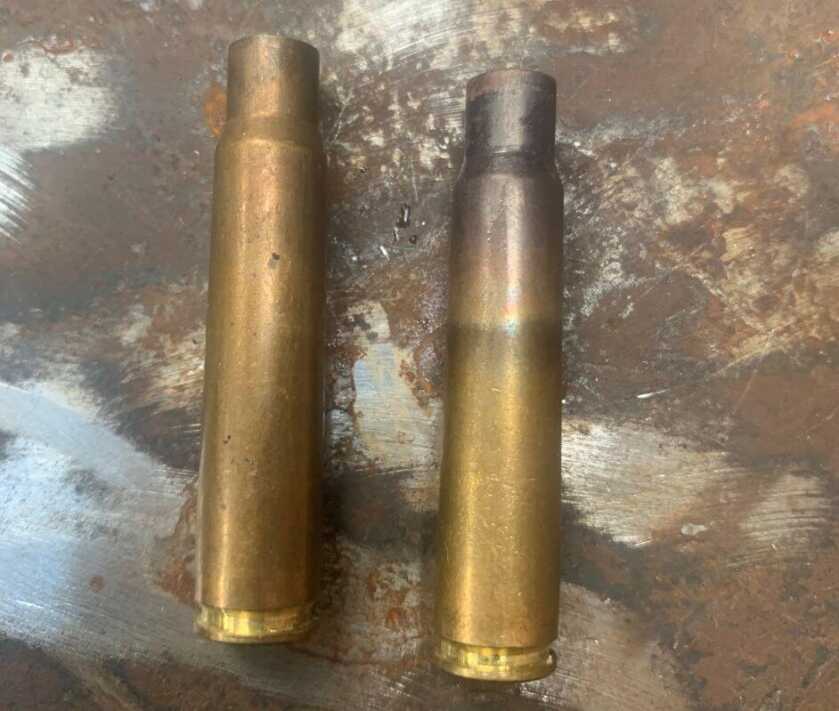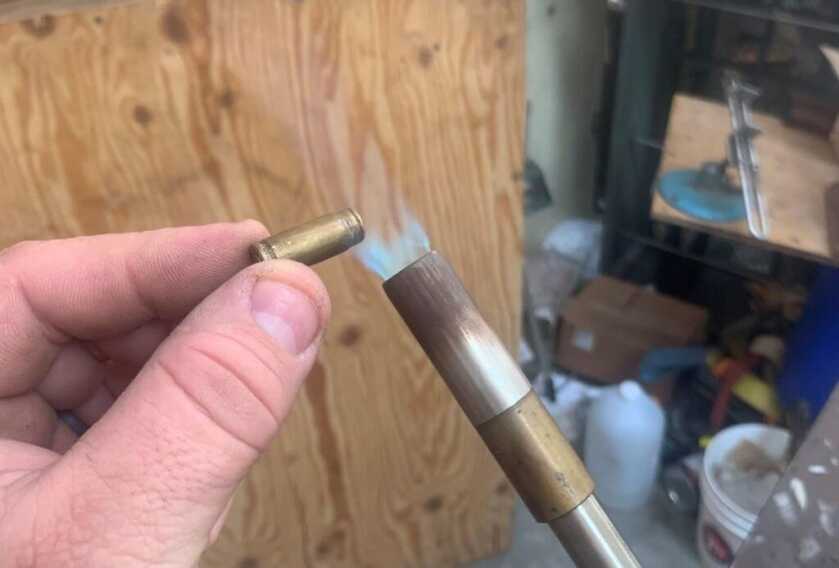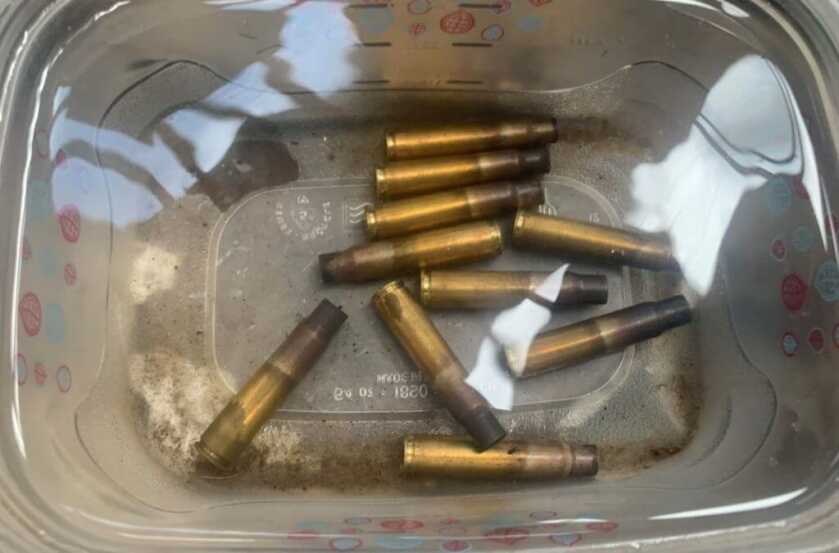
If you have been reloading or researching reloading for any length of time, you have probably heard of the term “annealing”. If you haven’t, then you have seen evidence of it before. If you look at the necks of some ammunition, you’ll see some almost-rainbow colors somewhere just down from the shoulder of the case. That is evidence of annealing. There are some advantages for reloaders to use this process as well, and the purpose of this article is to familiarize you with the concept and demonstrate a simple way to anneal your cases.
Annealing is the stress reduction of the brass to prevent it’s becoming brittle and cracking or breaking. All bottlenecked cases are annealed during production. This is done to prevent the case from cracking or otherwise failing. Military cases are typically required to have evidence of annealing (hence why they have the visible coloring). For the reloader, annealing your cases has a number of benefits. As I mentioned earlier, brass gets hard and brittle through it being worked and also with age. Obviously, reloading is in part the resizing of the cases back to the proper size for reuse. Cases loaded several times will get brittle and crack eventually. Annealing these cases will prolong their useable life significantly. With reloading components in general rather hard to get right now, it makes sense to try to get as much life out of your brass as you can.
Also, case conversions can work brass significantly in the conversion process. Sometimes this is significant enough to cause cracks in the case within the first or second firing. If you put very much work into converting them, you really don’t want to have to toss your cases after the first time you use them. Annealing these cases will reduce the stress in the cases from working them during the conversion process, making it possible to get decent life out of them.

Lastly, brass will get brittle from age. At this point in time, there are lots of “old casings” floating around, as centerfire brass cased ammunition has been around since the late 1800s. If you have firearms in older, odd-ball calibers you probably have some of these. For that matter, .223 ammunition has been around for 60 years. But unlike .223, some of those older calibers have only had very small amounts of components (or none at all) for decades. Even if these cases are unfired, their age alone can be problematic. I’ve had old casings split the first time I’ve tried to reload them. Annealing them can make them usable. With even common components hard to get now, this can be really useful to reloaders.
The annealing process itself is fairly straightforward and simple. It is a heat-treatment process. You heat the brass up to critical temperature, 650-700 degrees, and quench it. This is obviously different than steel, where heating and quenching are done to harden it. Regardless the devil is in the details. You can’t heat the whole casing, because if you anneal the case head the case is ruined. You just want to get the neck and shoulder of the case. The other tricky part is that because the casing is by nature really thin, heat travels really quickly through it. Obviously, this makes it tricky to anneal the case without heating the case head excessively.

There are a few different ways to anneal cases. Currently, there are a number of annealing machines on the market. I’ve seen a few of them. If you want a consistent, perfectly even anneal, then you will want to get one of these machines. Unfortunately, you do have to pay for that. These machines can be expensive (if any of you reading this have a suggestion for an affordable option, please let me know in the comments), with some models I’ve seen being $800 or better. A less expensive option is by hand with Tempilaq (a temperature indicating liquid) and a torch. I’ve seen people speak pretty highly of this method, and it isn’t particularly expensive. The one thing I don’t like about it is that you need a specialized material to do it, that being the liquid. With the supply issues we’ve had with simple things in the last 18 months, I think the future availability of a necessary consumable is a consideration. In fact, I think it was unavailable when I first started looking at annealing my cases several months ago.

So I found an even simpler and cheaper method, that didn’t take any specialized equipment. Similar to the Tempilaq method, I anneal the cases by hand with a torch. But, I hold the cases by the case head in my bare hand while I heat them. As the case neck heats up, the heat travels down the case. When it gets too hot to hold, I drop it into a container of water. From my research, you don’t need to be concerned about overheating the case neck (as opposed to the case head, where this is a major problem). One other advantage here, aside from being inexpensive and simple, is that you’re not going to overheat the case head. It will feel too hot to hold onto well before the case head can overheat, because obviously “too hot to the touch” is a few hundred degrees below the critical temperature. This also makes this method “self-correcting” if you heat the case too much, but you still won’t overheat the case heads if you burn your hand (unless you’re trying to be a real trooper about it). As I heat the case, I roll it in my fingers to try to evenly heat the case all the way around. Obviously, this does not result in it being perfectly even all the way around, but it works fairly well with a little practice. When the case is ready, you drop it in the water to quench it, and then your cases are done.

To illustrate this process, I annealed some old Turkish 8mm Mauser cases. Most of these cases weren’t properly annealed originally, and many times the case necks will split on the original firing of this ammunition. Some of you reading this are undoubtedly asking, “Why in the world would you bother to mess with those?” I started experimenting with annealing using them because if I ruined them, no great loss. Now that I figured out this process, I have a project in mind for them. I also annealed some .222 cases I’m using for a case conversion as they were similar to .223 in size, just to show that it works with smaller rifle cases as well.
At any rate, I used a simple propane torch to heat the cases, and a container of water to quench them. That’s all you need for equipment for this quenching method. Obviously, you need to be careful to not stick your fingers directly into the flame. You could probably use a butane torch instead, which might be a little easier in that regard. It’s best to place your water so that you just drop the cases straight into it from the flame. That ensures that when you inevitably get the case a bit hot while you’re getting the hang of it, you’re not playing “hot potato” trying to get a piece of hot brass to the water. I also find it’s easier to “see your progress” as the case is heating if the cases are clean when you start.

Hopefully, this article sheds a little light on the process of annealing your cases, and its purpose. My method is a quick and easy way to try it out, though there are some other methods of annealing. Any way you do it, annealing your cases will give you a much longer case life. Until next time, happy loading!

So while lubing, de-priming and resizing the brass the bucket tipped onto and dirty floor. So I washed them and threw ’em into a cookie sheet at around 350 degrees F for about 2 hours, not a practice I’ve used before. The case neck is rainbowing. Still need to charge and insert the bullet. Should I be concerned?